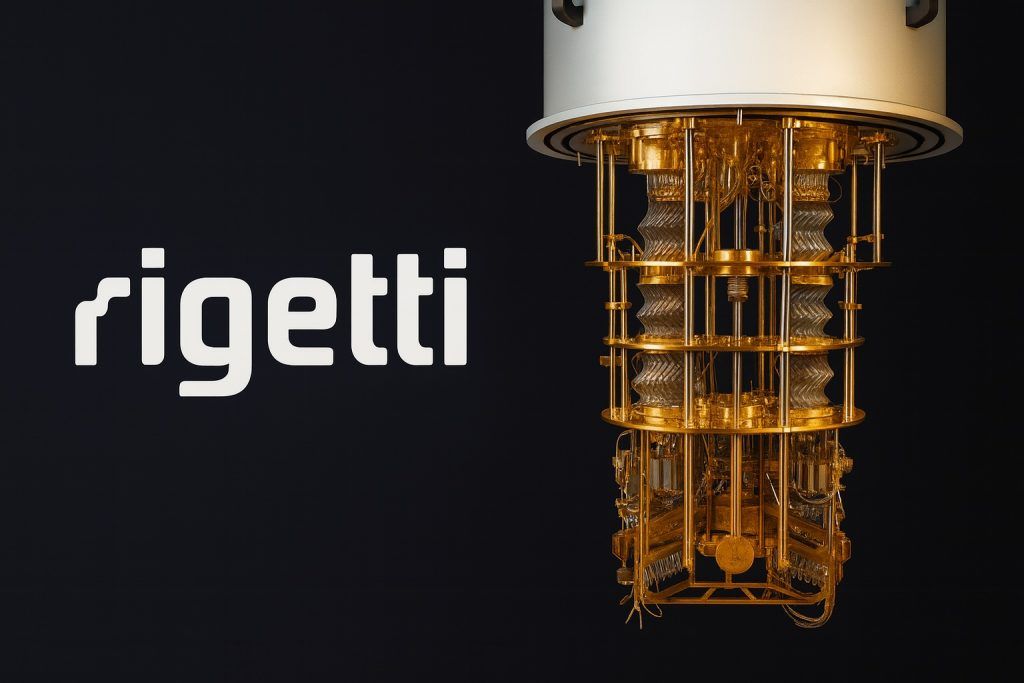- NuScale SMR surges ~20%. NuScale Power’s ticker SMR jumped roughly 14% intraday on Oct. 13 and closed Oct. 15 around $55.09 – up 20.3% from the prior close [1] [2]. The rally was driven by a historic SMR contract: NuScale’s partner ENTRA1 inked a 6 GW deployment program with TVA (six 77-MWe NuScale reactors) – “the largest SMR deployment in U.S. history” [3] [4]. This 6GW plan (powering ~4.5 million homes and dozens of AI data centers) sent SMR stock soaring.
- Huge market growth. The global small modular reactor market is booming – from $5.81 billion in 2024 to a projected $8.37 billion by 2032. Utilities and tech firms (Google, Microsoft, OpenAI, etc.) are backing SMRs for reliable 24/7 power. For example, TVA signed deals for SMRs from both NuScale (TVA/ENTRA1) and Kairos Power, and even reactivated stalled projects (like Clinch River) [5] [6]. Europe is reviving nuclear too: Italy is moving to restart reactors “including modular and advanced” designs [7], and GE Vernova/Samsung announced five BWRX-300 SMRs for Sweden [8].
- NuScale tech edge. NuScale’s SMR is the first and only U.S. design certified by the NRC – initially a 50-MWe unit in 2020, uprated to 77 MWe in May 2025 [9] [10]. NuScale’s factory-built modules can be stacked (up to 12 per plant, ~924 MWe total) [11]. It has deep partnerships via ENTRA1 (financing and operating SMR plants), Standard Power (planning ~2 GW of SMRs for AI/data centers), and vendors like Paragon Energy (supply systems) [12] [13]. NuScale CEO John Hopkins calls the SMR “proven technology” that provides “clean, reliable, and, most importantly, safe” energy [14] [15]. Even Alphabet/Google’s CFO Ruth Porat has urged that “nuclear has to be a part of the mix” for future energy needs [16].
- GE Vernova’s push. GE Vernova (GE’s nuclear arm, ticker GEV) is also racing to capture SMR demand with its BWRX-300 (300 MWe) reactor. In September, GE Vernova and Hitachi partnered with Samsung to sell BWRX-300s globally (five units proposed in Sweden) [17]. TVA has formally accepted GE Vernova’s SMR application at Clinch River [18], with more projects expected. YTD GE Vernova stock is up ~97% (versus +151% for SMR) [19]. However, GE Vernova’s legacy business faces headwinds: high tariffs and wind-unit costs are dragging profits [20]. This led Zacks to rate GEV a weaker pick (Zacks Rank “Sell”) compared to SMR (“Hold”) [21].
Analysts Weigh In
Analysts note that SMR’s recent rally reflects both real progress and speculative fervor. On one hand, NuScale’s NRC approvals and partnerships set it up as an industry leader [22] [23]. In early October, NuScale shares even spiked +5% when Italy’s government moved to reintroduce nuclear power with “modular” reactors [24] [25]. On the other hand, NuScale still loses money (burning ~$95M cash per quarter as of mid-2025) and faces stiff competition [26] [27]. The Zacks report notes NuScale has underperformed peers recently (SMR +12.7% in 3 months vs. GE Vernova +17.6%, NanoNuclear +35%) [28]. It warns that the energy market is competitive (especially with renewables) and that SMR’s valuation is stretched [29] [30].
Indeed, metrics show SMR’s stock is expensive: a forward price/sales ratio ~85× [31] (vs. ~4× for GEV [32]) and a Zacks Value Score of F [33]. Wall Street consensus reflects caution: out of ~15 analysts, most rate SMR a “Hold” or “Buy” with a median 12-month target around $37–$40 [34] – roughly 25–30% below today’s $55 price. TradingView’s aggregate target is similar (~$42.75) [35]. Zacks therefore assigns SMR a #3 (Hold) rating [36] and suggests waiting for a pullback. By contrast, GE Vernova (Zacks #4 Sell) is seen as cheaper (P/S ~4.4×) but burdened by $300–$400M in 2025 tariffs and wind costs [37].
Outlook
Looking ahead, the analysts and industry experts are mostly bullish on SMR demand but mixed on the stocks. The NuScale/ENTRA1/TVA 6 GW deal provides a concrete project to support NuScale’s outlook, and similar global initiatives are emerging (Poland, Romania, Sweden, etc.). Tech companies and utilities are planning data centers and industrial hubs powered by SMRs [38] [39]. “Utilities see SMRs as crucial to provide round-the-clock carbon-free power in the AI era,” notes an industry analysis [40]. NuScale plans its first plant by 2030 [41], and the U.S. government is funding many SMR projects, suggesting years of tailwinds.
However, execution risk remains high. Past SMR ventures have stumbled (NuScale’s 6-unit plant in Idaho was scrapped in 2023 after cost overruns [42]). Delays and budget increases could damp stock gains. In the short term, if SMR stock retreats toward analyst targets (~$37–$40), some buyers may step in – but a sustained rally would require continued positive news (e.g. contract awards, regulatory wins). In sum, NuScale appears to lead the SMR boom [43], but investors should weigh its lofty valuation. As financial strategist Marcin Frąckiewicz notes, “NuScale’s SMR tech breakthroughs and key partnerships give it an edge,” but caution is warranted given high expectations [44].
Sources: News and analysis from Zacks, NASDAQ, TS2.tech, Motley Fool, WPLN, and company releases [45] [46] [47] [48], stock quotes and data as of Oct. 14–15, 2025 [49] [50].
References
1. ts2.tech, 2. www.investing.com, 3. ts2.tech, 4. wpln.org, 5. wpln.org, 6. ts2.tech, 7. www.nasdaq.com, 8. www.nasdaq.com, 9. ts2.tech, 10. wpln.org, 11. ts2.tech, 12. ts2.tech, 13. ts2.tech, 14. ts2.tech, 15. ts2.tech, 16. ts2.tech, 17. www.nasdaq.com, 18. www.nasdaq.com, 19. www.nasdaq.com, 20. www.nasdaq.com, 21. www.nasdaq.com, 22. finviz.com, 23. ts2.tech, 24. www.nasdaq.com, 25. www.nasdaq.com, 26. www.nasdaq.com, 27. finviz.com, 28. finviz.com, 29. finviz.com, 30. finviz.com, 31. finviz.com, 32. www.nasdaq.com, 33. finviz.com, 34. ts2.tech, 35. ts2.tech, 36. finviz.com, 37. www.nasdaq.com, 38. ts2.tech, 39. ts2.tech, 40. ts2.tech, 41. ts2.tech, 42. wpln.org, 43. ts2.tech, 44. finviz.com, 45. finviz.com, 46. ts2.tech, 47. wpln.org, 48. ts2.tech, 49. ts2.tech, 50. www.investing.com







